Nasal polyposis has been a source of suffering for patients and a vexing problem for doctors. Polyps are associated with so many different conditions-from aspirin intolerance to infections-so figuring out the body’s processes that bring polyposis about has been a tall order. That complexity has also made treating the condition difficult.
Progress is being made in defining polyps’ pathogenesis, but there might still be a long way to go. We are still far away, said Anders Cervin, MD, PhD, Associate Professor of Otorhinolaryngology-Head and Neck Surgery at Lund University in Sweden, whose work has included polyp research. Polyps are probably just a common response to an inflammatory process and they, in all likelihood, have several different etiologies-for example, polyps associated with aspirin intolerance, polyps associated with asthma, polyps associated with infection, et cetera.
Autopsy studies suggest that approximately 2% of the population suffers from polyps, said Robert Kern, MD, Professor and Chairman of the Department of Otolaryngology-Head and Neck Surgery at Northwestern University Feinberg School of Medicine in Chicago. So, assuming that about 10% of the population suffers from sinusitis, about a quarter of them have polyps-which diminish the sense of smell, among other effects.
It is hard to tell whether the incidence of polyps is on the rise, but it probably is, he said, as diseases normally associated with them, including asthma, have become more common.
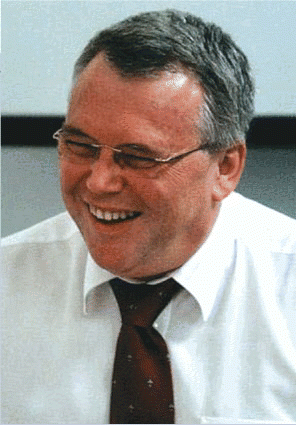 We see S. aureus enterotoxins as disease modifiers. We don’t think that they induce nasal polyps. But they just use the inflammation that is already there and amplify it strongly into a much more severe and chronic disease.
We see S. aureus enterotoxins as disease modifiers. We don’t think that they induce nasal polyps. But they just use the inflammation that is already there and amplify it strongly into a much more severe and chronic disease.–Claus Bachert, MD
They are increasing, so probably nasal polyposis is increasing, but no one would know the answer to that question definitively, said Dr. Kern, who has recently published research suggesting changes at the epithelial surface, causing a communication breakdown with the immune system, might be at work in polyposis. The reason is there is a lot of subclinical disease. We just don’t have good epidemiological data. But if I had to guess, I would say most likely the incidence of nasal polyposis is on the rise.
Role of Staphylococcus
Both Drs. Cervin and Kern said one of the most exciting areas of research recently involves the role of staphylococcus in polyposis. There has been some progress in looking at staph as a potential disease modifier-it seems to be associated very strongly with the disease of nasal polyposis, Dr. Kern said. That looks like a very promising area of research.
The researcher behind much of that work, Claus Bachert, MD, Professor of Otorhinolaryngology at the University of Ghent, reviewed some of his findings at this spring’s Rhinology World in Philadelphia. Strong IgE reactions to Staphylococcus aureus, he said, have been found in patients with nasal polyps, with double the number of colonies of the bacteria found in patients with nasal polyps-and double the number of IgE reactions to those colonies-compared with controls. The number of reactions in patients with both nasal polyps and asthma has been found to be nearly four times that in controls.
The association between staph and nasal polyps was also seen in another study in which 11 out of 21 patients with chronic rhinosinusitis with nasal polyps were IgE-positive to the bacteria, compared with none of the 10 patients with chronic rhinosinusitis without polyps and none of the nine controls.
But Dr. Bachert said a distinction needs to be made. If you find staphylococcus, it doesn’t necessarily mean that you have immune response because the immune response in terms of IgE was independent of whether we find it or not, Dr. Bachert said. We have to differentiate between the presence of staphylococcus and the response.
It’s the communication between the enterotoxin and the immune system that is important, he said.
In 2006, a study (Hellings PW et al. Clin Exp Allerg 2006;36:1063-71) set out to test the effect of staphylococcus in mice that had already had allergic reactions by ovalbumin. Inflammation was four to five times greater in the mice in which the allergic reaction had been brought about than in those in which it had not.
What you see is that it doesn’t make much difference whether you apply the enterotoxin intranasally or intrabronchially, Dr. Bachert said. You get a tremendous upregulation of eosinophils.
Researchers also have found that the combination of ovalbumin and staphylococcus (SEB) is a powerful instigator of inflammation. If you just apply the SEB, nothing happens, if you apply the ovalbumin intranasally, nothing happens, Dr. Bachert said. But if you apply them together, there’s a strong specific IgE response to ovalbumin. This is linked to eosinophilic inflammation.
It was also found that in mice in which this reaction was happening, there was also an increased in airway resistance. I think what you get once you have this started, this proves with every little bit of SEB you add to that, you get a further shift into the direction of T-cell activation, especially TH-2 cell activation, Dr Bachert said. And you get a downregulation of T-regulatory cytokines.
Treating Staph
Staphylococcus isn’t seen as the actual cause of the polyps, but they do a lot of the damage, he said. We see S. aureus enterotoxins as disease modifiers, Dr. Bachert said. We don’t think that they induce nasal polyps. But they just use the inflammation that is already there and amplify it strongly into a much more severe and chronic disease.
This translates into some very unhappy patients. I think we really need new strategies to treat those especially severe patients, Dr. Bachert said.
Anti-IL-5 medications will sort of shoot down your eosinophils, so to speak, he said.
Anti-IgE treatment is another option, but might be difficult to use, because the IgE in patients’ serum can be 200 units, but in local regions can be 1500 units. It might be very tricky to get this IgE antagonized, he said.
Research by Dr. Bachert’s group has shown that the oral steroid methylprednisolone reduces polyp size for a time, but begins to lose its effect on size and airflow after about 40 days. The antibiotic doxycycline has longer lasting effects, of about 80 days, their work has shown.
There might be an approach to at least temporarily suppress staphylococcus and get some benefit for the patient, Dr. Bachert said. Actually, in our clinical practice today, we like to combine steroids and doxycycline, which makes the steroid activity much better and longer.
Gene Expression Profiles
De-Yun Wang, MD, PhD, Associate Professor of Otolaryngology at the National University of Singapore, recently walked the same Rhinology World audience through abnormalities of the gene expression profiles in nasal polyps, including his research group’s findings of the importance of the AP-1 transcription factor.
Examination of the cells in nasal polyps shows mucosal inflammation and epithelial damage, with IL-5 and eotaxin and other eosinophil activators present.
The epithelium hyperplasia of basal cells, as well as squamous and goblet cells, is a stark contrast to the neat layers of basal cells, ciliated columnar cells, and interspersed goblet cells seen in normal nasal epithelium.
Testing of Asian patients has shown that allergies probably do not play a key role in the actual formation of nasal polyps, at least in that population, with atopy in 29.7% of patients with the lesions. The percentage of patients with atopy is quite small, Dr. Wang said. This is even lower than atopy in the general population. So we definitely can see that allergy probably doesn’t play a very important role.
Inflammation in polyps seems to involve eosinophils more than neutrophils, according to analyses of cell patterns. Eosinophils were seen alone in 21% of the patterns viewed, and seen with other cell types in another 42%. Neutrophils were seen alone in only 10% of the patterns viewed, but were seen in another 40% with other cell types, Dr. Wang said.
Predominant infiltration of T cells, especially CD+ T cells, could be a key component underlying the pathogenesis of nasal polyps, he said.
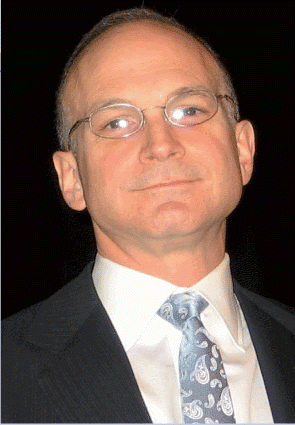 There is a lot of subclinical disease. We just don’t have good epidemiological data. But if I had to guess, I would say most likely the incidence of nasal polyposis is on the rise.
There is a lot of subclinical disease. We just don’t have good epidemiological data. But if I had to guess, I would say most likely the incidence of nasal polyposis is on the rise.–Robert Kern, MD
His group found that oral steroids help with epithelial repair in nasal polyposis, with upregulation of the AP-1 gene network (Li C et al. Thorax 2009;64:306-12).
In samples stained for the c-Jun protein, which is involved in creating AP-1, there is a clear benefit from gluticosteroid treatment. After treatment, Dr. Wang said, we really see this restoration of c-Jun protein. You see the structure, which is much better, a little bit recovered and improved.
Inherited genetic variation appears to be critical but yet still largely unexplained, Dr. Wang said in his presentation. Identifying the causal genes and variants in nasal polyposis is important in the path toward improved prevention, diagnosis, and treatment of nasal polyps.
Our data suggest that AP-1 and its related gene network are central molecular effecters of epithelial damage and repair, which can be modulated by glucocorticoid treatment, he continued. We hypothesize that these immunoregulatory and remodeling effects elicited by steroids might be, at least in part, mediated by the AP-1 gene network.
Samter’s Triad
Jan Gosepath, MD, of the Department of Otolaryngology-Head and Neck Surgery at the University of Mainz School of Medicine in Germany, talked about advancements in treating Samter’s triad, the condition involving asthma, aspirin sensitivity, and polyposis-which, he said, can have broader implications.
It is more about eicosanoid imbalance and it’s probably not limited to this rather small subgroup of patients really presenting with a clinical triad, but really spreads to the population of patients with nasal polyps in general, he said.
Dr. Gosepath touched on the apparent importance of growth factor, which is expressed in large amounts in polyposis. Cyclooxygenases-1 and -2 regulate growth factor at two different receptors: Cox-1 regulates permeability in microvascular endothelia, and Cox-2 regulates angiogenesis. In polyposis, Cox-2 is downregulated, leaving an interesting possibility, Dr. Gosepath said.
Putting all this information together-strong expression of the growth factor, the downregulation of cyclooxygenase-2, and the resulting (excess) of cyclooxygenase-1-one would hypothesize that this permeability effect of the growth factor might contribute to that typical clinical picture that we see in nasal polyps-and this being a pathway that might be one of the common denominators in immunology of chronic respiratory inflammation.
A problem with Samter’s triad is that it takes a long time to develop, so earlier detection would be a major benefit. Perhaps we are missing a lot of patients if we wait for them to present with the full clinical triad, Dr. Gosepath said. It might take 10 years or more for the asthma to develop, then another couple of years for the triad to come into full picture.
Trying for earlier detection with provocation testing is more expensive and carries risk. But Dr. Gosepath said that there is progress being made with more advanced tests.
In one study, the cellular allergen stimulation test (CAST) was found to have 53% sensitivity and 89% specificity. Flow-CAST was found to have 65% sensitivity and 90% specificity. And the functional eicosanoid test (FET) has been found to have 96% sensitivity and 73% specificity.
The FET test has been used increasingly, he said. However, it is mostly in clinical trials because it is not free, and most insurances do not cover this test, at least in our country, he said. So that is certainly a problem. But it’s a nice tool to have in hand.
Treating Eicosanoid Imbalance
What is found by those tests then leads to the next hurdle. If you come up with a decision that this patient needs treatment for eicosanoid imbalance, how do you do that, and what is your maintenance dose? he said. And is this a harmful treatment, or is this something that can be done in a larger population?
Studies have been all over the map on this score. They range from recommending a maintenance dose of 650 mg twice a day down to 100 mg a day-which was a conclusion reached by a study by Dr. Gosepath’s group (Gosepath J et al. Arch Otolarygnol Head Neck Surg 2001;127:316-21).
In his study, 18 patients were evaluated after a clinical course of 24 months on the low dose therapy of 100 mg a day. At the end of the study period, 15 out of 18 were free of recurrent nasal polyps. Just one of the patients needed a revision procedure. In the 12 patients who had asthma, seven of them showed improvement. And 11 of the patients had an improved sense of smell.
And in patients where even that dosage has been problematic, smaller doses have sometimes been effective, he said. We have already in some of these patients reduced to 80 or 50 mg with the side effects getting better, but without taking them off the aspirin, Dr. Gosepath said.
He said that treatment for eicosanoid imbalance might be worthwhile even in a wide range of patients. The question is: Is this really something to use even in aspirin-tolerant patients? I think yes. I think the eicosonoid metabolism is certainly a parameter that is relevant also in polypous chronic rhinosinusitis, where you do not see a clinical impact of aspirin sensitivity, he said. And, as we have learned from all this interest we have in aspirin sensitization, there is effective treatment in hand and therefore it is worthwhile evaluating this as a therapeutic target also in those patients.
Corticosteroid Treatment
Dr. Cervin said that corticosteroids still sit at the top of the heap when it comes to treating nasal polyps. It’s the old steroids that are still the mainstay in our treatment, combined with nasal douche.
The goals of treatment for nasal polyposis include establishing nasal patency, reducing runny nose, improving the sense of smell, delaying or slowing the growth of polyps, helping with or delaying surgery, and reducing the number of infections.
Glucocorticoids work by reducing vasodilation, reducing recruitment of inflammatory cells, reducing MMP-9 that breaks down the extracellular matrix, and reducing IgE production.
The differences between different intranasal corticosteroids appear limited and safety differences have been described as more theoretical than based on clinical observation, he said.
A 2008 study (Derendorf H et al. Allergy 2008;63:1292-1300) found that absorption into the system was similar for many types of the drugs. The biovailability of flunisolide was 50%, whereas it was just less than 50% for triamcinolone and beclomethasone. The bioavailability for budesonide was about 35%, the study found.
Clinical trials that evaluated the effects of intranasal corticosteroids on HPA axis function and growth in children found that they generally do not affect growth (Moller C et al. Clin Exp Allergy 2003;33: 816-22; Skoner DP et al. Ann Allergy Asthma Immunol 2003;90:56-62). One early study (Wolthers OD et al. Acta Paediatri 1993;82:635-40), though, found that they caused slower growth of the lower leg.
Studies have found that a twice-a-day dose of mometasone furoate nasal spray (MFNS) is better than once-a-day. Patients getting 200 mcg of MFNS have reported significantly better symptom relief than those on a placebo. The improvements included better breathing, less interference with daily activities, and less disturbance of sleep (Stjarne P et al. Acta Otolaryngol 2006; 132:179-85). But there was no significant difference between the groups when it came to taste and smell improvements.
In the same study, 9.9% of the 152 patients on MFNS spray reported complete relief from symptoms, 32.9% marked relief, 31.6% moderate relief, and 25.7% reported no relief. This was significantly better than the placebo group, 2.2% of which reported complete relief and 54% no relief.
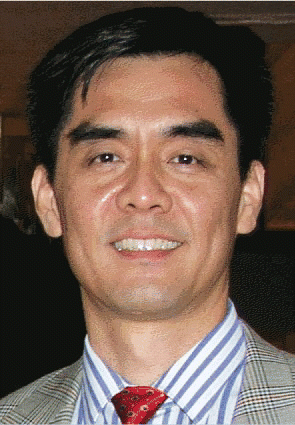 Inherited genetic variation appears to be critical but yet still largely unexplained. Identifying the causal genes and variants in nasal polyposis is important in the path toward improved prevention, diagnosis, and treatment of nasal polyps.
Inherited genetic variation appears to be critical but yet still largely unexplained. Identifying the causal genes and variants in nasal polyposis is important in the path toward improved prevention, diagnosis, and treatment of nasal polyps.–De-Yun Wang, MD, PhD
Dr. Cervin said drops of 400 mcg show some benefit over a spray, but it is a small one. It’s a higher dose-the normal spray does is around 200 micrograms, he said. What has been seen with drops is that there is a better effect on the sense of smell. That’s probably the only difference.
Despite the effectiveness of steroids, up to 30% of patients experience reduced effect over time. This might be due, at least in part, to infection-the superantigen staphylococci upregulate glucocorticoid receptor-beta, which inhibits the effectiveness of the drug.
Steroid resistance doesn’t need to be permanent, he said. It can disappear. It can be in conjunction with eosinophilic inflammation, during an infection, for example.
Steroids Versus Surgery
But are corticosteroids actually better than surgery? Data are sketchy on this, Dr. Cervin said.
One small study compared surgery in one nostril with intranasal corticosteroids in the other. Researchers found that there was a longer-lasting reduction in polyp size after surgery, but that there was no correlation between polyp score and patients’ symptoms (Blomqvist EA et al. J Allergy Clin Immunol 2001;107:224-8).
In another study, a single injection of 14 mg of betamethasone followed by intranasal corticosteroid treatment was compared with intranasal polypectomy followed by the steroid treatment. After 12 months, there was no significant difference in nasal score and sense of smell (Lidholdt T et al. Arch Otolaryngol Head Neck Surg 1997;123:595-600).
Even the technique can matter when it comes to treating nasal polyps with steroids through the nasal passage, Dr. Cervin said, mentioning one study in particular (Foo MY et al. J Aerosol Med 2007;20:495-508).
If you use a very small angle on a plume of spray, it reaches further back into the nose, he said Maybe this is a way to get more effect.
Other Treatment Possibilities
Intranasal corticosteroids have also been shown to be effective at preventing or delaying recurrence of polyps. Of eight studies, six-three of them randomized, controlled trials-showed that they delayed recurrence. Two of the studies showed no effect, Dr. Cervin said.
In one study, MFNS patients took 173 days to relapse, compared with 61 days for those who took a placebo (Stjarne P. et al. Arch Otolargyngol Head Neck Surg 2009;135:296-302).
Studies have also found that oral steroids, too, can help combat nasal polyps (Hissaria P et al. J Allergy Clin Immunol 2006;118:128-33; Benitez P. Laryngoscope 2006;116:770). But taking systemic corticosteroids should not be done without caution. Careful dosage is essential to limiting side effects, Dr. Cervin said.
In one study (Holmstrom et al. Acta Otolaryngol 2002;122:736-44), the dosage recommendation for prednisolone was 30 mg once a day for seven days, followed by 20 mg once a day for seven days, then 10 mg once a day for seven days-a series that could be repeated three times a year if needed.
A study led by Dr. Bachert (Drugs 2005;65:1537-52) found that a two- to three-week course of methylprednisolone should be recommended, starting at 32 mg once a day and reduced by half every five days, until the dose is cut to 8 mg. That regimen could be given up to four times a year, according to the study.
The American College of Rheumatology has recommended that patients starting long-term glucocorticoid therapy (5 mg a day or more for at least three months) should have bisphosphonate therapy to prevent bone loss, Dr. Cervin noted.
There is a lack of placebo-controlled trials evaluating antibiotics’ effect on polyps. Two uncontrolled studies have shown a reduction of polyp size, but a third showed no effect.
Macrolides have been shown to be more effective in neutrophilic inflammation, but might lack an effect in atopic patients.
Capsaicin has been shown to reduce recurrences, cut down polyp size, and improve rhinitis symptoms, Dr. Cervin said.
Leukotriene antagonists might be an alternative for patients with sensitivity to aspirin, but its effectiveness has not been documented, he said.
Furosemide is a possible alternative for steroid-resistant patients. Two studies have shown an effect compared to a placebo. A furosemide spray prevented relapse of polyposis better than mometasone spray and a placebo in one study (Passali et al. Arch Otolaryngol Head Neck Surg 2003;129:656-59).
According to the European Position Paper on Rhinosinusitis and Nasal Polyps 2007, the highest evidence grades for treatments still went to topical steroids, oral steroids, and nasal douche, which all received grades of A.
Ultimately, Dr. Cervin said, it is important for physicians to assess each patient and tailor the treatment accordingly. I think it’s very important that you characterize your patient, he said. It’s just not nasal polyps, it’s nasal polyps with something-for example, asthma or allergy. A treatment directed toward the associated disease as well will improve patients’ quality of life.
I’m fairly optimistic about the future, he said. There are new drugs developing and coming up in the next couple of years. I also think the ENT community has taken to doing randomized controlled trials. You’re seeing more and more of that.
©2009 The Triological Society
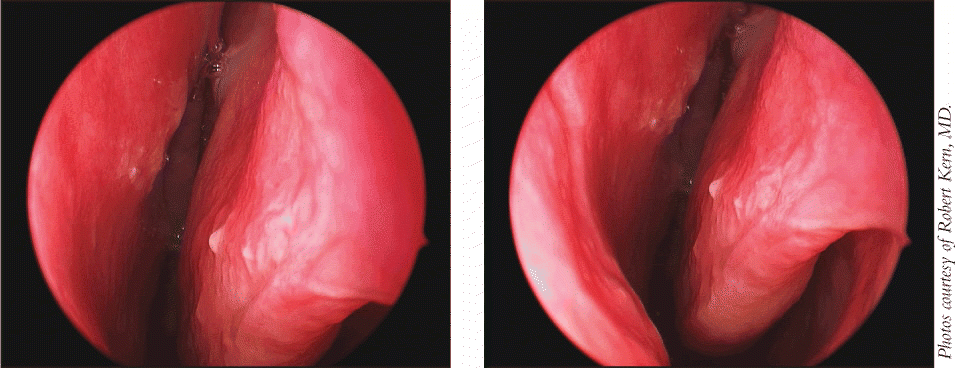
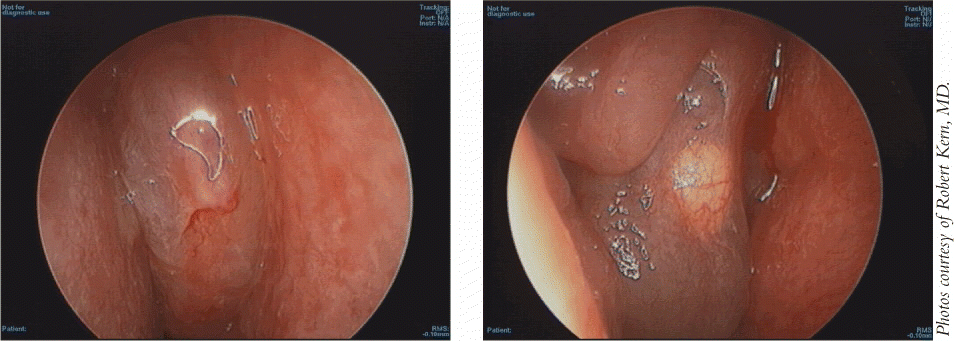
Leave a Reply